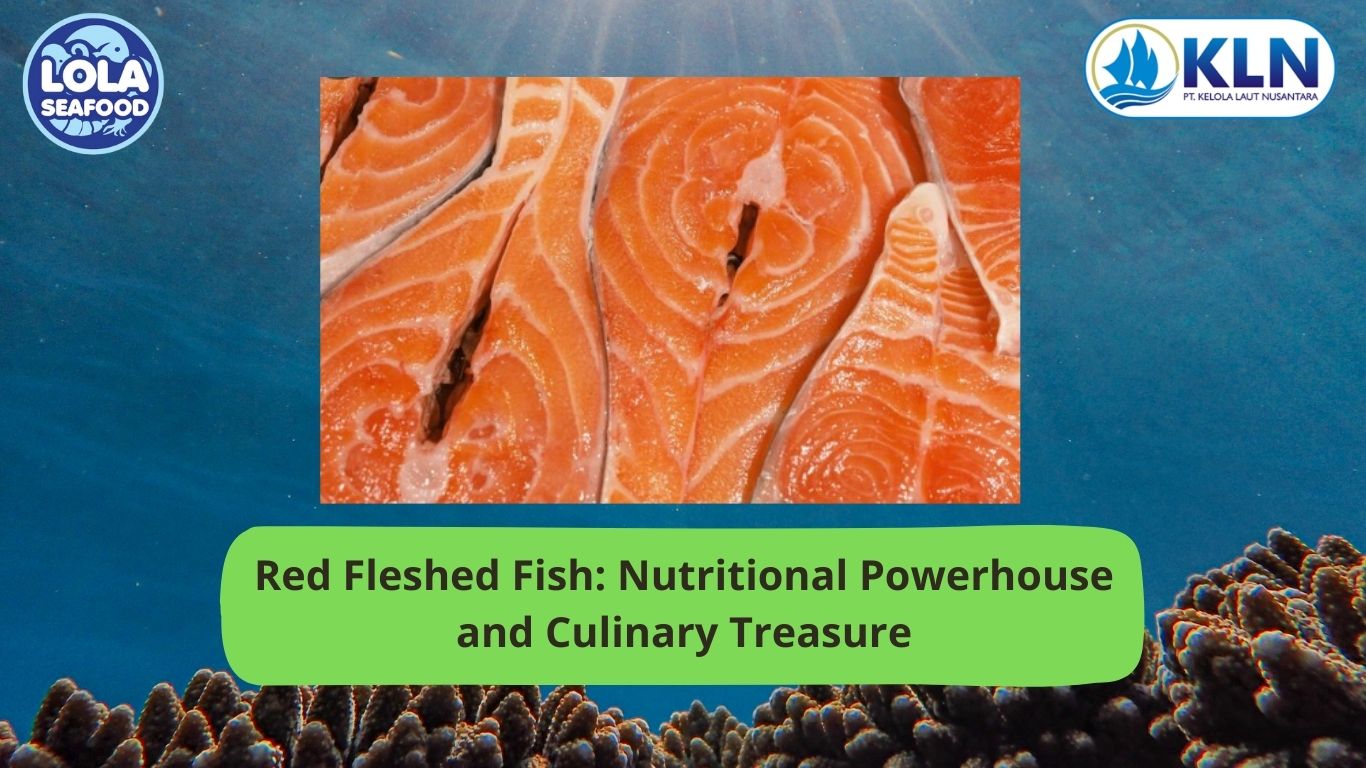Red Fleshed Fish: Nutritional Powerhouse and Culinary Treasure
By. Wiwik Rasmini - 25 Sep 2025
Kelolalaut.com Red-fleshed fish, such as tuna, salmon, and mackerel, are among the most sought-after seafood species around the globe. Their distinctive reddish or pinkish flesh, which differentiates them from white-fleshed fish like cod or tilapia, is not just visually appealing but also nutritionally significant. This unique coloration is primarily due to the presence of myoglobin and carotenoid pigments such as astaxanthin, which give these fish their characteristic appearance. Beyond their aesthetics, red-fleshed fish play an essential role in healthy diets, global cuisine, and the fishing industry.
Nutritional Benefits of Red-Fleshed Fish
Red-fleshed fish are considered one of the most nutrient-dense protein sources available. They are particularly valued for their high content of omega-3 fatty acids—EPA (eicosapentaenoic acid) and DHA (docosahexaenoic acid)—which have been extensively studied for their cardiovascular, neurological, and anti-inflammatory benefits. Regular consumption of omega-3-rich fish has been linked to reduced risk of heart disease, improved cognitive function, and better joint health.
In addition to healthy fats, red-fleshed fish provide high-quality protein that is essential for muscle growth, tissue repair, and overall body function. They are also excellent sources of vitamins such as vitamin D, which supports bone health, and vitamin B12, which is crucial for red blood cell formation and nervous system health. Important minerals like selenium, iodine, and phosphorus further enhance their nutritional profile.
Unique Biological Characteristics
The reddish coloration of these fish is more than just an aesthetic feature. The higher concentration of myoglobin in their muscles allows them to store more oxygen, supporting sustained activity. This is why many red-fleshed fish are strong swimmers, often living in open ocean environments where they must travel long distances to find food or migrate. For example, tuna are among the fastest fish in the ocean, capable of swimming at remarkable speeds due to their muscular endurance and efficient oxygen utilization.
Astaxanthin, the carotenoid responsible for the pink-orange hue of salmon and trout, is obtained through their diet, which often includes krill and other crustaceans. This pigment is also a powerful antioxidant, providing health benefits not just to the fish but also to humans who consume them.
Culinary Versatility and Global Popularity
Red-fleshed fish have a firm texture and rich flavor that make them versatile in the kitchen. They can be grilled, baked, smoked, canned, or even served raw, as in sushi and sashimi. Tuna steaks are prized for their meaty texture and are often seared to preserve their tenderness. Salmon, one of the most popular species, is celebrated for its delicate flavor and is commonly featured in cuisines worldwide, from Scandinavian smoked salmon to Japanese teriyaki salmon. Because of their high fat content, red-fleshed fish are also well-suited for preservation methods such as smoking and curing, which enhance their flavor profile while extending shelf life. This versatility has contributed to their high demand and economic value in global seafood markets.
Sustainability Concerns
Despite their popularity, many species of red-fleshed fish face sustainability challenges. Overfishing, habitat degradation, and climate change have put pressure on certain populations, especially highly migratory species like bluefin tuna. To address these concerns, fisheries management organizations have implemented quotas, size limits, and seasonal restrictions to ensure that stocks remain healthy.
Aquaculture, or fish farming, has become an increasingly important solution for meeting demand while reducing pressure on wild populations. Farmed salmon, for instance, now account for the majority of salmon consumed worldwide. However, responsible aquaculture practices must be followed to minimize environmental impacts such as water pollution and the spread of disease.
Red-fleshed fish hold a unique place at the intersection of nutrition, biology, and gastronomy. They provide essential nutrients that support human health, exhibit fascinating adaptations that enable their active lifestyles, and inspire culinary traditions across cultures. However, with their growing popularity comes the responsibility to protect these valuable resources through sustainable fishing and farming practices. By making informed choices as consumers and supporting responsible fisheries, we can ensure that red-fleshed fish continue to be a vital part of global diets for generations to come.
If youre interested in our Barramundi Whole Round / Whole Gilled Gutted Scaled , Barramundi Fillet Skinless , Barramundi Fillet Skin On and Barramundi Fillet Portion Cut please do not hesitate to contact us through email and/or Whatsapp




.jpg)

.jpg)

.jpg)